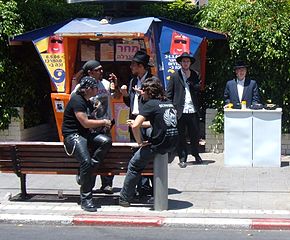 1. Menahem Sheinkin was born in Russia in 1871.
1. Menahem Sheinkin was born in Russia in 1871.
2. A committed Zionist, he moved to Palestine in 1906 and headed up the World Zionist Organi-zation’s information and immigration office in Jaffa.
3. Critical of the Labor Zionists, with their socialist leanings, he was among the first to point out the difficulty of turning Zionist visions into practical blueprints. To this end, he sought to attract immigrants who could support themselves “respectably,” who had a skill and were not impoverished. He wrote, “This immigration lowers us in the eyes of the government and the local populace. They see poor, ragged, miserable people with tattered bundles, the dregs of society, who are unlikely to do the country any good…If there are never any wealthy, respectable, well-dressed, attractive people stepping ashore, the word ‘Jew’ will become synonymous for weak, inferior and low-class.”
4. Palestine, he felt, should be a place where Jews felt instantly at home. More Jewish immigrants felt at home not on farms, but in cities. At a time when those who worked the land were lauded, he said that craftspeople were equally involved in building the land and should be equally valued as pioneers.
5. Not only was he one of the founders of Tel Aviv, but it was he who suggested the city’s name, based on a translation into Hebrew of Herzl’s Altneuland.
6. He was also one of the founders of Herzlia Gymnasium, the first Hebrew high school in Palestine.
7. In 1924, he died in a traffic accident while on a Zionist mission in Chicago. He is buried in Trumpeldor Cemetery in Tel Aviv.
8. Tel Aviv’s Sheinkin Street was once a modest neighborhood with housing built for artisans. It is because of this connection to craftsmanship that the street was named for him after his death.
 9. Do you find it ironic that the street became chic and trendy, filled with well-dressed and attractive people shopping in its stores and drinking coffee in its cafes? Just the sort of people Sheinkin wanted to attract, it seems!
9. Do you find it ironic that the street became chic and trendy, filled with well-dressed and attractive people shopping in its stores and drinking coffee in its cafes? Just the sort of people Sheinkin wanted to attract, it seems!





